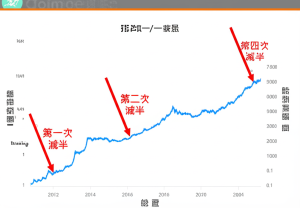
Bitcoin has recently dropped to $107,000, marking a significant correction in the cryptocurrency market and triggering sharp declines across major digital assets, including Ethereum, XRP, and Dogecoin, all of which fell over 5% in a single session. This sudden downturn has sent shockwaves through the crypto ecosystem, raising concerns about the stability of the market and the broader implications for investors and traders.
The Trigger: Geopolitical Tensions and Market Sentiment
The immediate catalyst for Bitcoin’s plunge was a combination of geopolitical uncertainty and a shift in global risk appetite. Recent remarks by former U.S. President Donald Trump regarding potential new tariffs on Chinese goods sparked a broad risk-off move across financial markets. The threat of escalating trade tensions between the world’s two largest economies rattled investor confidence, prompting a flight to safety and a sell-off in riskier assets, including cryptocurrencies. Bitcoin, often seen as a barometer of market sentiment, was not immune to this wave of selling pressure.
The impact was swift and severe. Bitcoin’s price, which had been trading in the low $120,000s at the beginning of October, rapidly declined to below $109,000, and then further to $107,000. This marked the first “red October” for Bitcoin since 2018, ending a six-year streak of monthly gains that had become known as “Uptober.” The selloff was exacerbated by the liquidation of leveraged positions on derivatives platforms, with tens of billions of dollars in long positions being wiped out in a matter of days. The total market value of cryptocurrencies plummeted by over $1.1 trillion, underscoring the fragility of the current market structure.
The Role of Leverage and Liquidations
One of the key factors amplifying the downturn was the high level of leverage in the crypto market. Many traders had taken on significant long positions, betting on continued price appreciation. When the market began to turn, these leveraged bets quickly unraveled, leading to a cascade of liquidations. According to Coinglass data, if Bitcoin were to fall below $107,000, the cumulative long liquidation intensity on major centralized exchanges would reach $259 million. This means that a large number of traders would be forced to exit their positions, further driving down the price.
Conversely, if Bitcoin were to break above $109,000, the cumulative short liquidation intensity would reach $128 million, indicating that a rebound could also trigger a wave of short-covering. The liquidation chart, while not showing the exact number of contracts pending liquidation, illustrates the intensity of these clusters. A higher “liquidation bar” suggests that once the price reaches a certain level, there will be a stronger reaction due to liquidity waves. This dynamic creates a feedback loop, where price movements are magnified by the actions of leveraged traders.
Broader Market Impact: Ethereum, XRP, and Dogecoin
The impact of Bitcoin’s decline was not limited to the flagship cryptocurrency. Ethereum, XRP, and Dogecoin all experienced significant drops, with each falling over 5% in the same period. The total value of liquidations across the crypto market reached $493.6 million over the past 24 hours, highlighting the interconnectedness of the digital asset ecosystem. Spot ETFs also saw continued outflows, with Bitcoin funds losing $191.6 million and Ethereum funds $98.2 million on Friday alone.
The meme coin sector was particularly hard hit, plunging 7.6% in the past 24 hours, with the total valuation dropping below $60 billion to $56.9 billion. Cat-themed coins led the decline, falling 14.1%, followed by AI-based tokens (-10.6%) and Solana meme coins (-8%). This broad-based sell-off underscores the vulnerability of the market to sudden shifts in sentiment and the potential for contagion effects.
Technical Analysis and Market Outlook
Despite the recent downturn, some analysts remain cautiously optimistic about the long-term prospects for Bitcoin. Michael van de Poppe noted that Bitcoin’s weekly chart remains strong, with the current consolidation appearing healthy. He suggested that a green week could pave the way for new all-time highs. Crypto trader Jelle added that despite bearish breakdown attempts, Bitcoin continues to form higher lows at key support, indicating a possible “red Monday, green week” setup.
Ted Pillows highlighted that Ethereum is testing a crucial support zone, and holding this level could trigger a rally toward $4,000, while losing it risks a fall below $3,500. Javon Marks reminded traders of his earlier call where XRP outperformed Bitcoin by over 243%, rising 570% from $0.49 to above $3.35. He now forecasts XRP could outperform BTC by over 600% this time, potentially driving another major price surge. Crypto chart analyst Ali Martinez pointed out that Solana must reclaim the $200 level to confirm strength, which could open the path toward $260.
Macroeconomic Factors and Institutional Demand
The broader macroeconomic environment also plays a crucial role in shaping the market’s direction. The Dollar Index (DXY) has been following a pattern similar to that of late 2017, with a strong upward trend since August. If this pattern persists, the DXY could rise above 100 points, which would likely put further downward pressure on Bitcoin and other risk assets. The US stock markets, which will only reopen in the afternoon in Europe, could also influence the market’s trajectory.
Institutional demand remains a key factor. Despite the recent outflows from spot ETFs, there is still significant interest from institutional investors. The recovery of the market will depend on renewed institutional buying and the Federal Reserve’s policy decisions. Persistent macroeconomic risks, including inflation, interest rates, and geopolitical tensions, will continue to weigh on investor sentiment.
Conclusion: Navigating the Volatility
The recent drop in Bitcoin’s price to $107,000, along with the sharp declines in Ethereum, XRP, and Dogecoin, highlights the volatility and interconnectedness of the cryptocurrency market. Geopolitical tensions, high leverage, and broad market sentiment have all contributed to this downturn. While some technical indicators suggest the possibility of a rebound, the broader macroeconomic environment remains uncertain. Investors and traders must remain vigilant and adapt to the rapidly changing landscape, as the market continues to navigate through periods of heightened volatility and risk.
資料來源:
[1] www.ainvest.com
[2] www.rootdata.com
[4] cryptopotato.com
[5] www.benzinga.com
[6] www.fxempire.com
Powered By YOHO AI




